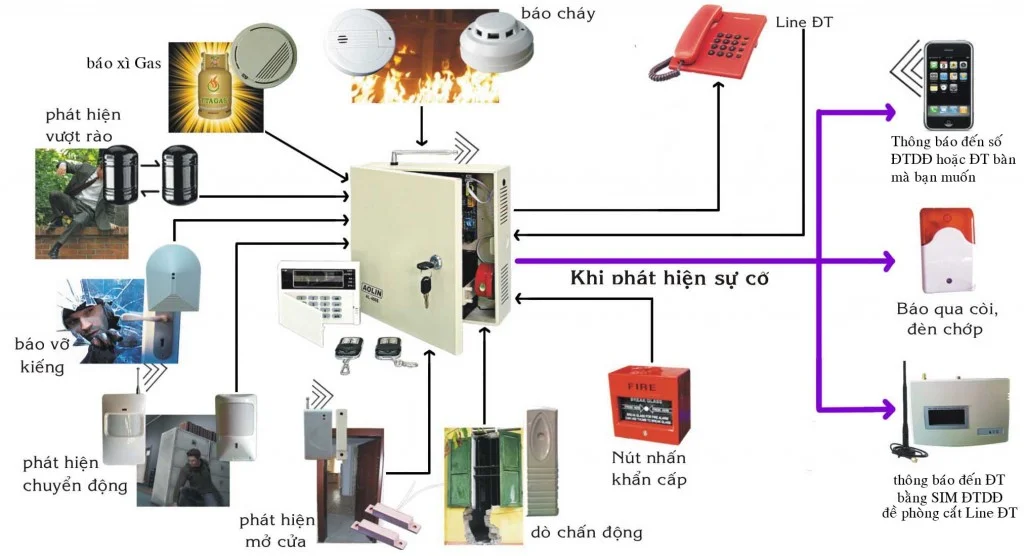Understanding Addressable Fire Alarm Systems
An addressable fire alarm system is essentially a network control system. It only transmits 1 bit of data (indicating whether there is a fire or not), so the data load on the network is very small. Therefore, high transmission speed is not necessary (to avoid errors in the network), and everything is simplified to maximize system reliability.
There are many manufacturers of addressable fire alarm systems, such as Notifier, Nohmi, Hochiki, Siemens, etc., each using different naming conventions. However, in general, an addressable fire alarm system consists of two main types of devices: sensors and modules.

Sensor
These are heat and smoke detectors with individual addresses. When a sensor is triggered, the system can identify exactly which point is in alarm, especially if the system is integrated with a graphical interface at the fire alarm control panel (FA panel).
The FireNet addressable fire alarm system uses the advanced Digital Communication Protocol (DCP), developed by Hochiki. This protocol enables high-speed, accurate communication between the devices and the control panel, minimizing signal interference during transmission.
Thanks to DCP’s strong noise immunity, the system can use standard cables, without the need for shielded or twisted-pair wires like other systems require. This results in cost savings while still ensuring reliable and efficient operation compared to other addressable fire alarm systems.

Modules in Addressable Fire Alarm System
Using Conventional Detectors
You can use conventional detectors in an addressable system, but you’ll need a monitor module (also called a zone module, depending on the manufacturer). Each module of this type can be connected to around 14–17 conventional detectors. These modules can also be used to monitor the status of other equipment, such as fire pumps, generators, fire suppression valves, etc.
Control Module
This module controls 24VDC alarm bells. If you’re using 220VAC or 24VAC bells, or bells with high power requirements, then you’ll need a relay module instead.
I/O Module
In places where multiple monitoring and control points are concentrated — such as water pumps — and you want the FA system to both control and monitor these devices, you will need multiple inputs and outputs. In such cases, an I/O module is required for the addressable fire alarm system.
Heat Detectors (in Addressable Fire Alarm System)
These detectors share the same general characteristics as addressable smoke detectors. They are usually installed on the ceiling, in areas where heat is expected to be the first sign of fire in the surrounding air.
When heat is emitted from a fire source, it activates the heat-sensitive component of the detector, which then triggers an alarm signal sent to the addressable fire alarm control panel.
There are two types of heat detectors:
-
Fixed Temperature Heat Detectors: These activate an alarm when the surrounding temperature rises to a pre-set threshold — for example, 58°C, 68°C, or 108°C.
-
Rate-of-Rise Heat Detectors: These activate an alarm when the surrounding temperature rises rapidly within a short time, for example, 6°C/min or 8°C/min.
After reading this article, you should have a better understanding of addressable fire alarm systems. If you still have any questions or need installation services, please contact our hotline: 082 668 7979.






